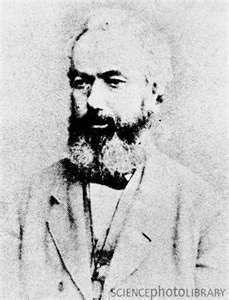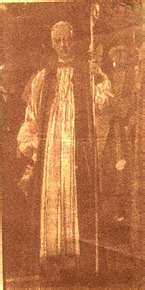The definitive guide to fax (2017)
Last Update: August 9th, 2021
Evolved from an 1840s invention synchronizing the timing mechanism of two clocks into the business powerhouse of the 1980s and 1990s, fax has been a driving force in communication for over a century. Since then, it’s changed again to integrate with the internet and email systems.
Summary
- Yes, it’s 2017 and people still use fax.
- While traditional standalone fax machines have mostly disappeared, fax is a common feature in multifunction (printer/scanner/copier/fax) machines, and has migrated to the internet with online fax services and fax servers.
- Fax (as in the ability to send an image electronically) predates the telephone. France had a service in place (using telegraph lines) between Lyons and Paris at the time of the U.S. Civil War.
- The most common reasons for the use of fax are confirmation pages, the ability to send to a general address, and “it’s the way we’ve always done it.”
On this page
- What is fax?
- Fax basics (sending, receiving, getting a fax number, and more)
- How does fax work
- How fax is regulated and standardized
- How did we get here? A quick history of fax
- Where does the word fax come from? a quick etymology
- Who’s still using fax in 2017?
- How are people faxing today?
- The future of fax
- More resources
What is fax?
Fax (also known as facsimile) is a way of sending a document electronically over a telephone line. When a fax is transmitted, a document is scanned by the sending fax machine, transmitted (usually over a phone line, sometimes over the internet), and printed at the receiving fax machine.
Fax basics
Sending a fax – a quick guide
To send a fax, you will need a document as well as a fax machine, online fax service, or similar technology.

Place a cover sheet (including who the fax is to and from and how many pages) at the front of the document, dial the destination fax number. When the other fax machine confirms that the transmission’s receipt, a confirmation page prints at the sending fax machine.
Receiving a fax – a quick guide
To receive a fax, you will need a way of receiving a fax (fax machine, online fax service, fax software, etc.) set up.
Give your fax number (the phone number assigned to the phone line or fax service) to the person you want to send you a fax and wait for them to send it. Faxes will automatically answer the call.
Getting a fax number
How to get a fax number depends on the type of fax system to be used.
Fax machines and computers running fax software require a landline phone line (VoIP phone lines have a lot of challenges).
For online faxes and internet faxes, most providers will provide the fax number along with the service.
Fax servers require phone lines in the server area.
Setting up a fax machine
Modern fax machines are set up in a very similar way to printers and multifunction print/copy/scan units. The only difference with the fax machine is that it needs to be plugged into an active landline phone line to be able to send and receive faxes.
How does fax work?
Fax works by scanning an image of a document and encodes it into an electronic signal and sends it across a phone line.
At the receiving end, the receiving fax machine decodes the signal and turns it back into a printed image on a page.
How is fax regulated & standardized?
The International Telecommunications Union standardizes fax protocols.

Most developments in fax technology concern the internet and faster transmission speeds.
How did we get here? A quick history of fax
The history of fax (the ability to transmit an image over a distance) is traced to an invention by Alexander Bain in 1843 and functioned as a system of synchronized clocks. Soon after its invention, it operated over telegraph wires and was in service between Paris and Lyons.


Through the last half of the 19th century and the first part of the 20th, it evolved through some inventions including the telautograph, telephotograph, telex, and also through terms of telefacsimile, telefax, and eventually fax as we know it today.
The late 1940s saw the introduction of the first fax “systems” through Western Union to complement their telegram business.
Technology evolved through to the 1980s and 1990s where fax became the primary mode of business communication and a symbol of the times (along with very large cellular phones).
Replaced by email in most situations, fax has maintained a foothold through the 2000s and 2010s in government and large organizations. The Internet and online fax systems have now evolved to include many of the features that made email more competitive.
Etymology and origin of the word “fax”
“Fax” and “facsimile” are the two words most often used today.
Our research indicates that the word “telefacsimile” derived from the word “facsimile” in the 1940s.

“Telefacsimile” was later shortened to “telefax” and then to “fax” (the same way that “telephone” became “phone”).
Where “facsimile” originally meant an exact copy or replica, today it has also come to mean a fax transmission.
Who’s still using fax in 2017?
More people than you’d think.
In our experience, many people are using fax in 2017. Most fax communication involves either government, a large business, or organizations in the legal or healthcare world.
Most fax communication involves either government, a large business, or organizations in the legal or healthcare world. As these types of organizations interact with the everyday lives of people around the world, there is a continued need for fax.
Reasons people are faxing
- A confirmation page that shows receipt of the message
- Fax can be better at sending to a “to whom it may concern” than email
- The ease of signing a document, putting it back into a sheet feeder, dialing a regular phone number, and pressing send
- A “why change it when it works” approach often found in large organizations
- Understanding from a generation that didn’t grow up with today’s technology
Common industries using fax
- Government
- Healthcare
- Legal
- Logistics, Transportation, & Shipping
- Banking
- Insurance
How are people faxing today?
Fax Machines
The “old fashioned” method of faxing with a machine is still around, and in some offices still going strong.
While the traditional “fax only” machine has seen a large decline, it has migrated along with printers, scanners, and copiers into multifunction units that include all these features.
Online fax services
An online fax service would be better called a “cloud fax” – it’s a lot like a webmail (Gmail, Hotmail, etc.) service for fax.
A service provider runs the fax infrastructure (phone line, storage, & software). Faxes can be sent and received through email, a web app, a desktop program, or a smartphone app.
Internet fax, FoIP, and fax servers
Internet fax includes some different technologies and includes any fax that is transitioning the internet.
FoIP stands for “Fax over IP” and is a technology allows for fax machines to communicate over internet addresses. Adoption has been limited (most use we’ve seen has been within the same organization instead of between different organizations) or used with a fax server to centralize communication.
Fax servers have become a staple of many mid-sized to large organizations. Consolidating some fax lines into on central server, they act like a locally hosted online fax service.
Fax software (non-server)
Most fax software turns a computer into a replacement for a fax machine.
The computer connects to a phone line the same way a fax machine does. However, instead of printing off a fax, the software receives it into the program.

Windows (including XP, Vista, 7, 8, and 10) has a small selection of fax software. It even includes “Windows Fax and Scan” for free in most versions.
Linux also has a small selection of fax software through open source channels.
Mac has no software available since OS X 10.6, as the USB modem has no longer worked with OS X since that version. Online fax services are the only option we’ve found with MacOS.
Local retail and public service outlets
Print shops, mailbox stores, hotels, and public libraries are common outlets where fax services may be available. Even as the popularity of fax is decreasing, the need for fax remains and many “office services” retail outlets see a neighborhood fax service as a way to get people into the door.
The future of fax
While fax volume worldwide is still on the decline, our prediction is that fax will continue to have a place in the world for the core applications such as confirmation pages, the ability to send to a general address, and a legal/regulatory framework that is slow to change.
For many organizations (and governments), the cost savings from switching to a new technology or abandoning fax do not outweigh the risks involved in the move.
Over time, regulations will evolve, laws will update, and technology will change. The day will come when screech of a fax handshake is no longer heard. For the time being, however, we have the fax.
More resources
- Wikipedia – Fax – Wikipedia’s entry on the fax. Includes an overview of the technology as well as transmission standards.
- Encyclopædia Brittanica – Fax (communications) – Another encyclopedia entry on the fax. Includes history as well as faxing works.
- Dictionary.com – fax – definitions of the word “fax.”
- Techtarget – Fax definition – in depth definition of the fax from TechTarget’s Networking community.
- Financial Times – the Joy of Fax – an article on fax in today’s technological world.
- ThoughtCo – History of the Fax Machine and Alexander Bain – a history of fax machines and fax’s inventor, Alexander Bain.
- How Stuff Works – History of the Fax Machine – History of fax machines from how stuff works
- Secret Life of Machines – The Secret Life of the Fax Machine – a cartoon overviewing the invention of fax machines.
- Fax Authority – the History of Fax – our guide to the history of the fax machine, from its invention to today’s present day devices.
- Fax Authority – the Ultimate Guide to Online Fax – our guide to online fax services.